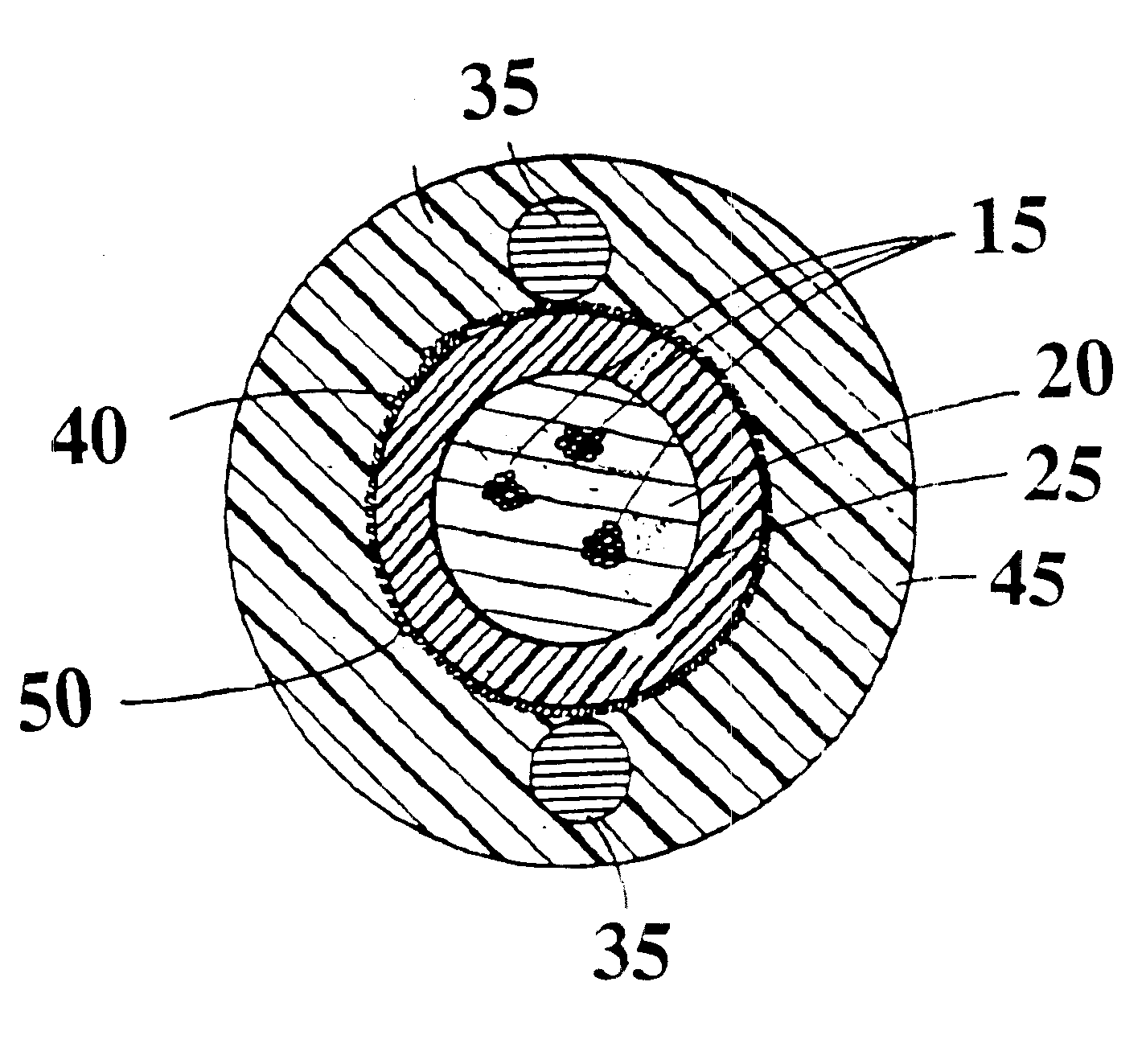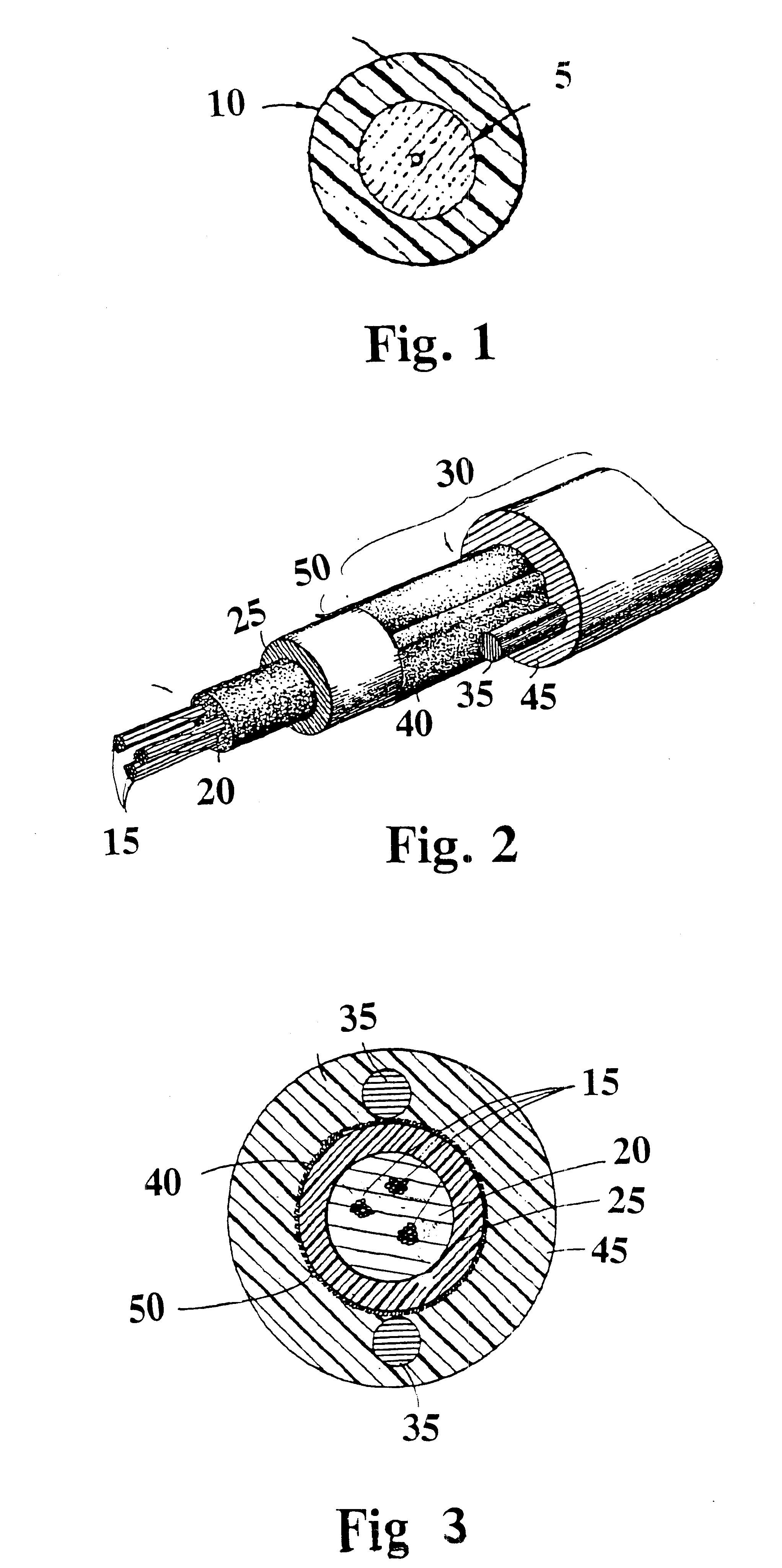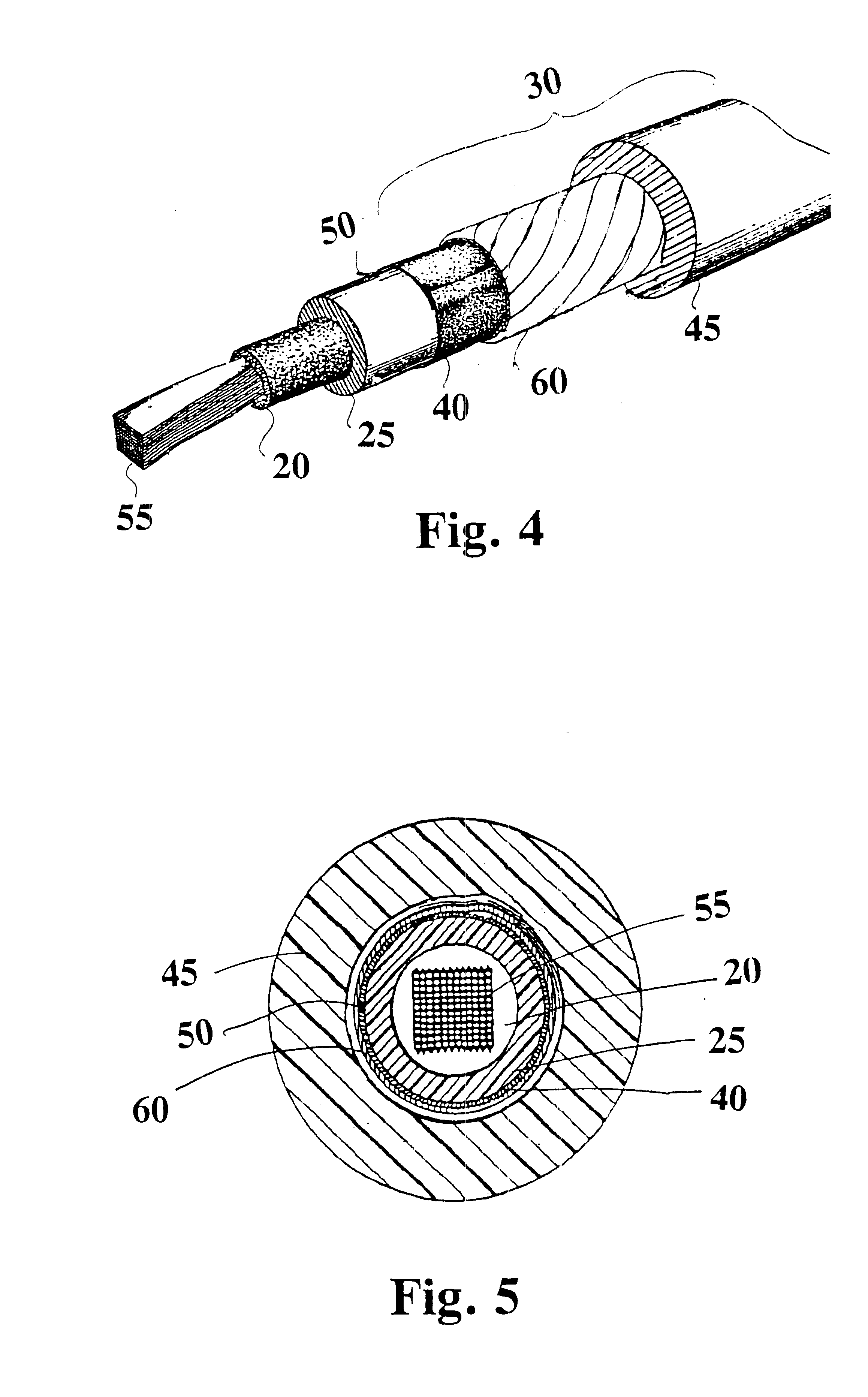Communication cable having a soft housing
a technology of communication cable and soft housing, which is applied in the direction of optics, fibre mechanical structures, instruments, etc., can solve the problems of unsuitable contact with optical fibers, unwholly interchangeable, and inability to meet the needs of optical fibers, so as to minimize the resulting strain on optical fibers, inhibit dripping, and reduce the effect of modulus
- Summary
- Abstract
- Description
- Claims
- Application Information
AI Technical Summary
Benefits of technology
Problems solved by technology
Method used
Image
Examples
Embodiment Construction
It is an object of the invention to provide an alternative to the petroleum based filling materials conventionally used in the art by at least partially embedding an optical waveguide in a relatively soft material(s). In one embodiment of the present invention the material(s) comprises a three-dimensional molecular network that have bonded through crystallization, intermolecular hydrogen bonding and / or intermolecular polar attraction of functional groups and not necessarily through covalent crosslinking. The three dimensional network, optionally including various additives, desirably possesses suitable properties under service conditions such that temperature change does not cause undesirable strain on the fibers, desirably possesses a low modulus thereby minimizing the resulting strain on the optical fiber, inhibits dripping at high temperatures and is inexpensive.
It is a further object of the invention to provide an alternative to the petroleum based filling materials, which posse...
PUM
 Login to View More
Login to View More Abstract
Description
Claims
Application Information
 Login to View More
Login to View More - R&D
- Intellectual Property
- Life Sciences
- Materials
- Tech Scout
- Unparalleled Data Quality
- Higher Quality Content
- 60% Fewer Hallucinations
Browse by: Latest US Patents, China's latest patents, Technical Efficacy Thesaurus, Application Domain, Technology Topic, Popular Technical Reports.
© 2025 PatSnap. All rights reserved.Legal|Privacy policy|Modern Slavery Act Transparency Statement|Sitemap|About US| Contact US: help@patsnap.com



